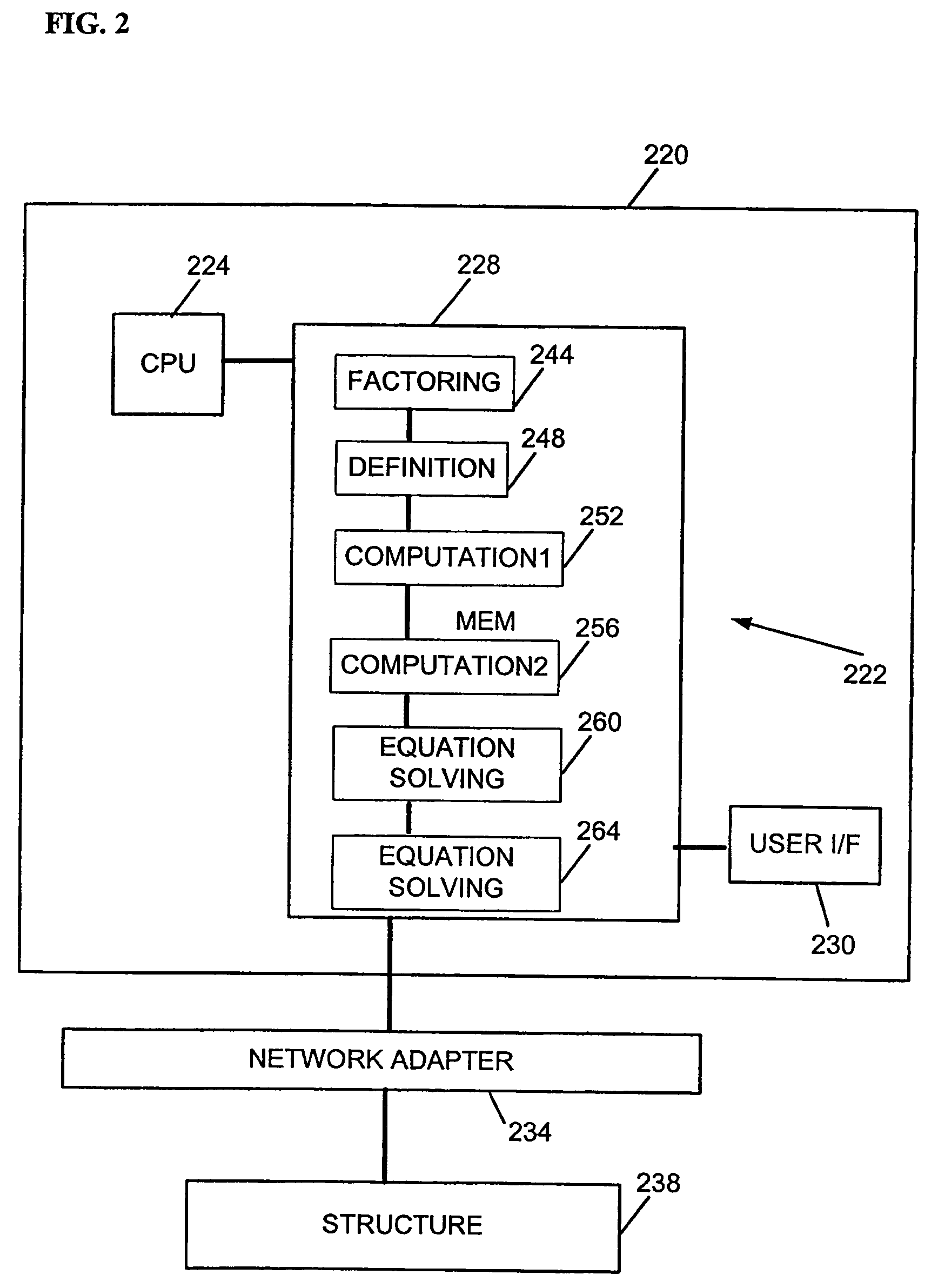Damped frequency response apparatus, systems, and methods
a frequency response and frequency technology, applied in the field of apparatus, systems, and methods for vibration analysis of various structures, can solve the problems of not being able to solve direct or iterative solutions at each frequency, and not being able to achieve the effect of reducing and increasing the cost of modal frequency response analysis
- Summary
- Abstract
- Description
- Claims
- Application Information
AI Technical Summary
Problems solved by technology
Method used
Image
Examples
Embodiment Construction
[0014]To simplify the following discussion, some basic definitions and notation will be introduced, as follows:[0015]MR: is a reduced form of a symmetric mass matrix M. However, for simpler problems, MR may also be treated as an original mass matrix.[0016]BR: is a reduced form of a viscous damping matrix B. However, for simpler problems, BR may also be treated as an original viscous damping matrix.[0017]KR: is a reduced form of a symmetric stiffness matrix K. However, for simpler problems, KR may also be treated as an original stiffness matrix.[0018]γ: is a scalar structural damping parameter.[0019]K4R: is a reduced form of a symmetric structural damping matrix K4, which represents local departure from the level of structural damping represented by γ. However, for simpler problems, K4R may also be treated as an original structural damping matrix.[0020]FR: is a reduced form of a matrix F including a plurality of load vectors acting on a structure. Loading may be mechanical, in the co...
PUM
 Login to View More
Login to View More Abstract
Description
Claims
Application Information
 Login to View More
Login to View More - R&D
- Intellectual Property
- Life Sciences
- Materials
- Tech Scout
- Unparalleled Data Quality
- Higher Quality Content
- 60% Fewer Hallucinations
Browse by: Latest US Patents, China's latest patents, Technical Efficacy Thesaurus, Application Domain, Technology Topic, Popular Technical Reports.
© 2025 PatSnap. All rights reserved.Legal|Privacy policy|Modern Slavery Act Transparency Statement|Sitemap|About US| Contact US: help@patsnap.com



